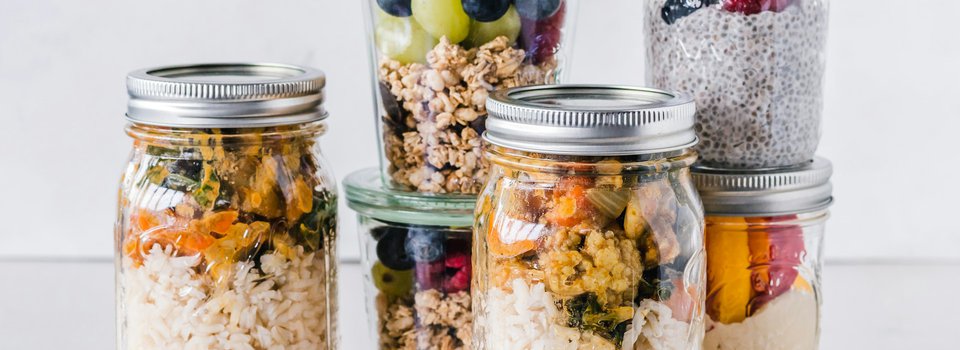Single-use food and beverage packaging are very common in today’s society. Most likely, you have noticed that a lot of food you purchase comes in single-use plastic packaging.
If you take a look in your pantry and kitchen, you’ll probably notice plastic food bags/wrap, and snacks with packaging that you just throw out. In grocery stores, many snacks are sold in individual packs with wrappers. Although fast-food restaurants and drive-throughs may be convenient, a lot of single-use packaging is used to pack or wrap the meals and snacks you order.
Single-use packaging tends to be made from different plastics and manufactured materials that are disposed of and NOT recycled or reused.
To create the food and beverage packaging (e.g. coffee cups and lids, styrofoam, plastic bottles and bags, and wrappers) the manufacturing process utilizes energy and many natural resources. Additionally, there are emissions and greenhouse gasses released when the packaging is being manufactured. Then, when the plastic and food packaging is incinerated, which is a method used to get rid of it, that process also contributes to air pollution. Moreover, when you dispose of single-use packaging, the non-reusable packaging ends up in landfills and can be carried by wind and water and end up in waterways and soil. As you can imagine, plastic pollution has a detrimental impact on marine life and soil fauna.
Single-use food packaging also has the potential to have a detrimental effect on YOUR health. Many plastics and single-use food/beverage packaging and containers (including cans) contain BPA.
BPA stands for bisphenol A and is an industrial chemical that can disrupt your endocrine system and hormones. Additionally, food boxes (like pizza boxes) and takeout wrapping have been linked to increased exposure to chemicals like PFAS (Perfluoroalkyl and Polyfluoroalkyl Substances) which are of health concern. These chemicals that are found in the food packaging have the ability to seep into the food/liquid that is being stored. A study in the medical journal JAMA Network Open found that those who had high levels of BPA in their urine were 49% more likely to die in a decade.
EWG (the Environmental Working Group) has a database that allows you to search for products to determine whether or not they may contain BPA!
Now, what can you do?
- Reduce your use of single-use food/beverage packaging.
- Aim to cook more at home (where you can use reusable dishes and cutlery) rather than order takeout.
- Try to purchase ingredients you use a lot in bulk that you can purchase by filling reusable containers.
- Look for ingredients in jars and containers you can recycle and reuse.
- Instead of using so much single-use packaging, you can use reusable food containers and try to make food at home that you can pack in them.
A mason jar or glass container is a great alternative to single-use plastic food packaging! Reusing and recycling empty mason jars is an environment-friendly sustainable choice in comparison to plastic containers/snack bags. The recipes provided in this blog are quick, healthy and nutritious; perfect for on-the-go! However, please note that the recipe provided are suggestions to try out and ideas for inspiration. Please feel free to pack the jars with whatever suits your desires and your go-to snacks! Mason jars are the perfect size for packing a snack that you can take with you wherever your day leads you. Moreover, you can even pack leftovers that don’t need to stay refrigerated for the day in the jar.
Checkout our recipes and tips for:
- Overnight Oats
- Super Easy Fruit/Cheese/Nut Combo Snacks
- Chai Granola
- Stovetop Popcorn
- Chia Seed Pudding
- Spiced Roasted Veggies
- The Ultimate Salad
- Berry Smoothie
- Easy Rainbow Fruit Salad
- Veggies and Dip (and tips for avoid soggy salads in jars)
- Energy Balls
Written By Leemah Sana
Research references:
“The Environmental Impact of Food Packaging.” FoodPrint, 13 Nov. 2020, https://foodprint.org/issues/the-environmental-impact-of-food-packaging/.
Cohenmed. “What’s so Bad about BPA?” Cohen Medical Associates, 28 Aug. 2020, https://www.cohenmedical.com/whats-so-bad-about-bpa/.
“How Will the Packaging Industry Navigate Upcoming Regulations on Chemicals?” Packaging Europe, 4 Aug. 2022, https://packagingeurope.com/news/how-will-the-packaging-industry-navigate-upcoming-regulations-on-chemicals/8551.article.
“Fast-Food Restaurants Should Ditch Packaging Coated in ‘Forever Chemicals’.” Environmental Working Group, 3 Nov. 2022, https://www.ewg.org/news-insights/news/2022/05/fast-food-restaurants-should-ditch-packaging-coated-forever-chemicals.


